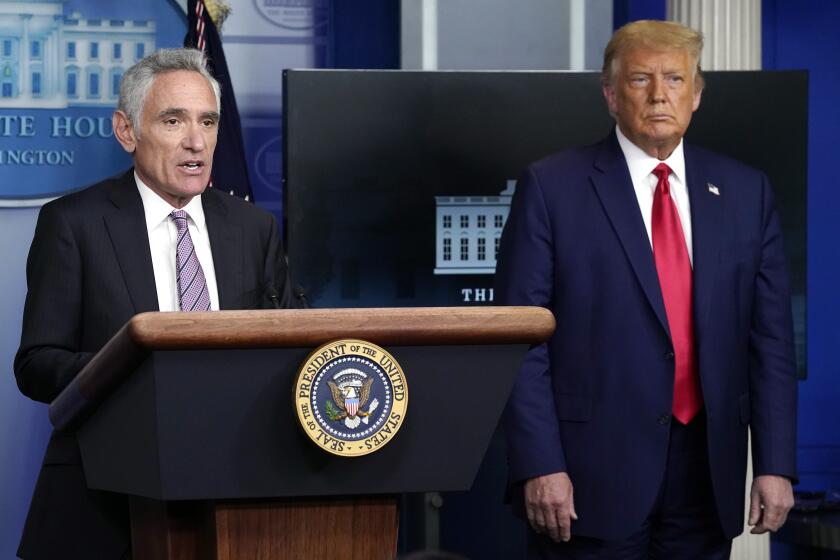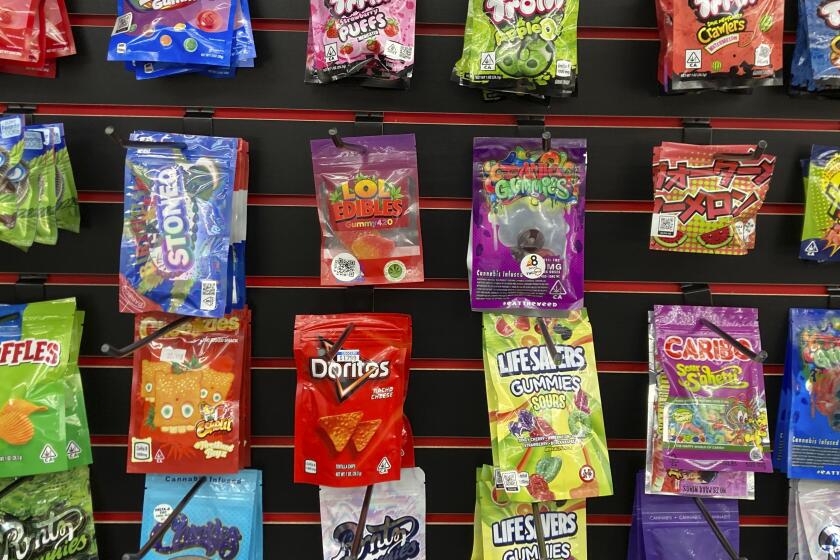Snack Food Makers Aim to Get Kids, Own Images in Better Shape
Four-year-old Ylan Isaac earnestly dumps mulch into a big plastic funnel, then pours it out. He dumps and pours, dumps and pours, in his favorite spot in the new playground at his preschool. Here, “you get to play with dirt,” he says.
Playing is exactly what PepsiCo Inc. had in mind when it decided to fund the playground at the CentroNia preschool in Washington, the first of 13 that the beverage and snack-food company plans to build around the country as part of its campaign to promote exercise. Like other big food companies, PepsiCo is trying to put the spotlight on fitness and nutrition to create a balance with the calories consumed while eating many of the foods it sells.
“It’s all about moving more, helping kids move more,” said Brock Leach, PepsiCo’s chief innovation officer, at the playground’s ribbon-cutting.
Snack-food companies are under attack for childhood obesity. With the number of obese children more than doubling over the last 30 years, healthcare professionals and consumer activists have called for more government oversight of food advertising.
To address their critics, many food companies have introduced more healthful products, such as reduced-sugar cereal and fruit and milk in fast-food restaurants. The nation’s largest food company, Kraft Foods Inc., announced this year that it would stop advertising its less-nutritious products on television and radio and in magazines aimed at children under 12.
By promoting exercise, the companies also hope to broaden the obesity debate beyond the issue of junk food to include the lack of exercise.
In addition to building playgrounds, PepsiCo -- the maker of Pepsi, Mountain Dew, Cheetos and Fritos -- offers a six-lesson curriculum to elementary and middle schools to teach students how to “balance the foods they choose with the ways they move,” the company said.
Pepsi’s rival, Coca-Cola Co., is spending $4 million to push its middle-school program, Live It, which gives pedometers to kids to get them more active. Coca-Cola hopes the program will be in 8,500 schools by the end of this school year.
McDonald’s Corp. has signed up 31,000 elementary schools to participate in its Passport to Play, which teaches students games from around the world.
General Mills Inc. is giving about $2 million a year to schools and community groups for nutrition and fitness programs. Kellogg Co. announced a $275,000 grant for a similar effort. Kellogg also is promoting the Get in Step program on its packages and website, encouraging kids and parents to do two things every day: walk an extra mile and eat a bowl of cereal.
The food companies’ fitness campaigns “illustrate how marketing has changed,” said Paul Kurnit, head of KidShop, a New York marketing firm that advises the companies on promoting products to children.
Firms that once relied primarily on TV and print ads are now “trying to make their brands resonate with consumers -- adults and kids,” Kurnit said. “A couple of years ago, food companies seemed to be deer caught in the headlights,” stunned by the attention and criticism, he said.
Most of the fitness campaigns do not mention food products by name, although the corporate sponsorship is almost always noted, sometimes prominently, sometimes only in fine print.
Even so, critics say the emphasis on fitness is an attempt to deflect blame.
“As long as these companies keep marketing junk food to children, anything else they do is pretty much irrelevant because the junk-food marketing is so much more prevalent,” said Susan Linn, a Harvard University psychologist and author of “Consuming Kids,” a critical look at marketing to children.
The latest initiatives also reflect a strategic change in corporate giving, said Carol Cone, founder and chairwoman of Cone Inc., a cause-marketing firm.
“Prior to this huge cry about obesity, some of these companies might do a playground or offer an after-school program here or there. But these were not seen as critical to their strategic viability,” Cone said.
Today, however, the companies fear greater government oversight, she said. “They don’t want to be legislated, so they’ve voluntarily come up with these programs so when there are finally hearings and they are called to testify, they can say, ‘These are the things we’re providing as a solution.’ ”
Amina Dickerson, senior director of global community involvement at Kraft, said, “We will always have some degree of cynicism about what our purposes are, but I would look at our long-standing philosophy to help consumers make more educated choices.”
Kraft, which earned $2.67 billion last year, has been steadily boosting its contributions to health and wellness campaigns, Dickerson said, noting that last year, the company spent $1.8 million on them. Kraft will increase that spending to $2.9 million this year and $3.6 million in 2006.
PepsiCo, with earnings of $4.2 billion in 2004, declined to say how much the PepsiCo Foundation spends on health and wellness programs.
PepsiCo’s campaign to build playgrounds -- separate from the foundation -- is part of a marketing push to promote its Smart Spot program. A new corporate logo -- a green-and-white check and dot -- is prominently posted on the company’s more healthful products, such as orange juice, oatmeal, diet soda and baked chips.
The playground project will cost PepsiCo about $850,000, said Darell Hammond, chief executive of Kaboom, a nonprofit group that has used corporate sponsors to build more than 900 playgrounds in low-income neighborhoods around the U.S.
In the last nine months, Hammond said, his group has had a deluge of sponsorship offers from consumer packaged-goods companies. He said he was selective about those he worked with. Kaboom recently turned down a tobacco company and the manufacturer of Hostess Twinkies.
In most cases, Kaboom’s playgrounds note corporate sponsorship only on small signs. Not so at the latest PepsiCo venture at the Washington preschool, where two Smart Spot logos are prominently displayed, one near the slide and the other over the music corner.
The corporate sponsorship was a no-brainer for CentroNia’s preschool, which couldn’t afford to build a playground on its own, said its executive director, Beatriz Otero. It was an easy offer to accept, she said, because the Smart Spot promotes healthful eating and exercise. “Those are the kinds of things we try to promote.”
The 4-year-olds, however, seem oblivious to the promotion. Ylan, for example, said he had no idea what the symbol meant, although his classmate Diego-Arturo Montiel said it was obvious: It means “school.” Most of the kids, said teacher Mariaesther Guzman, look at the check mark and “think it’s a happy face; it just means they should come and be happy outside.”
That’s just fine with PepsiCo. “There’s no expectation that kids, much less preschool kids, would recognize Smart Spot,” spokesman Mark Dollins said. “Smart Spot is targeted to moms, not kids. We want moms to see us as on their side.”
More to Read
Inside the business of entertainment
The Wide Shot brings you news, analysis and insights on everything from streaming wars to production — and what it all means for the future.
You may occasionally receive promotional content from the Los Angeles Times.









